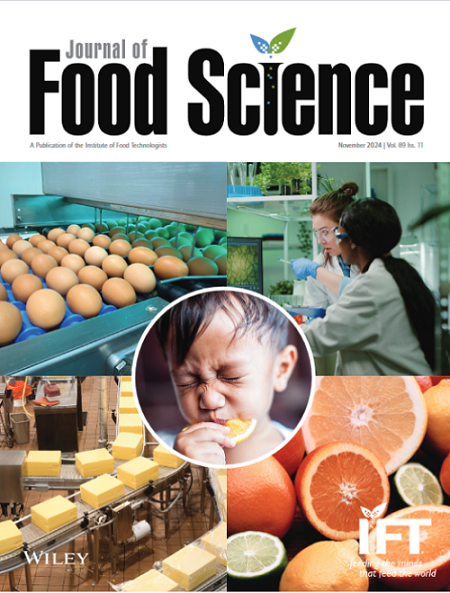Bigels as capsaicin and gallic acid co-delivery systems: Controlled release and enhanced bioavailability
Abstract
With the evolving lifestyles and diets, natural bioactives with excellent nutritional value and specific health benefits are attracting increased attention. In this study, a bigel constructed by glycerol monolaurate (GML) and low acyl gellan gum (LA) was used as the co-delivery system to protect capsaicin (CAP) and gallic acid (GA). The results showed that CAP and GA in bigel exhibited higher stability than free ones. After 12 days at 4°C, the retention rates of CAP and GA in bigel were 71.13% and 83.34%, respectively, which increased by about 25.91% and 49.32% compared to that of free ones. In vitro digestion showed that the bigel exhibited significant controlled and sustained-release effects on CAP and GA. At the end of simulated intestinal digestion, >40% and 30% of CAP and GA were still not released from bigel. In the Caco-2 cell monolayers model, CAP and GA are mainly absorbed and transported by passive diffusion, and their bioavailabilities were increased by 1.35- and 1.77-fold compared to individually entrapped systems. Therefore, the stability and bioavailability of CAP and GA can be improved by co-encapsulating with GML-LA bigel.
Practical Application
Capsaicin (CAP) and gallic acid (GA) have multiple activities and are excellent bioenhancers. However, they are averse to application due to their low bioavailability. Bigel is an excellent co-delivery system that can effectively improve their bioavailabilities. In our previous study, based on monolaurate glycerides and low acyl gellan gum, a bigel with excellent properties was developed. This study further explored the effects of bigel on the stability, digestive release behavior and bioavailability of CAP and GA. Compared to free CAP and GA, bigel significantly improved their stability, achieved controlled release effects, and increased the bioavailability by 1.35 and 1.77 times, respectively. It provides a new perspective for the development of new functional foods.

 求助内容:
求助内容: 应助结果提醒方式:
应助结果提醒方式:


